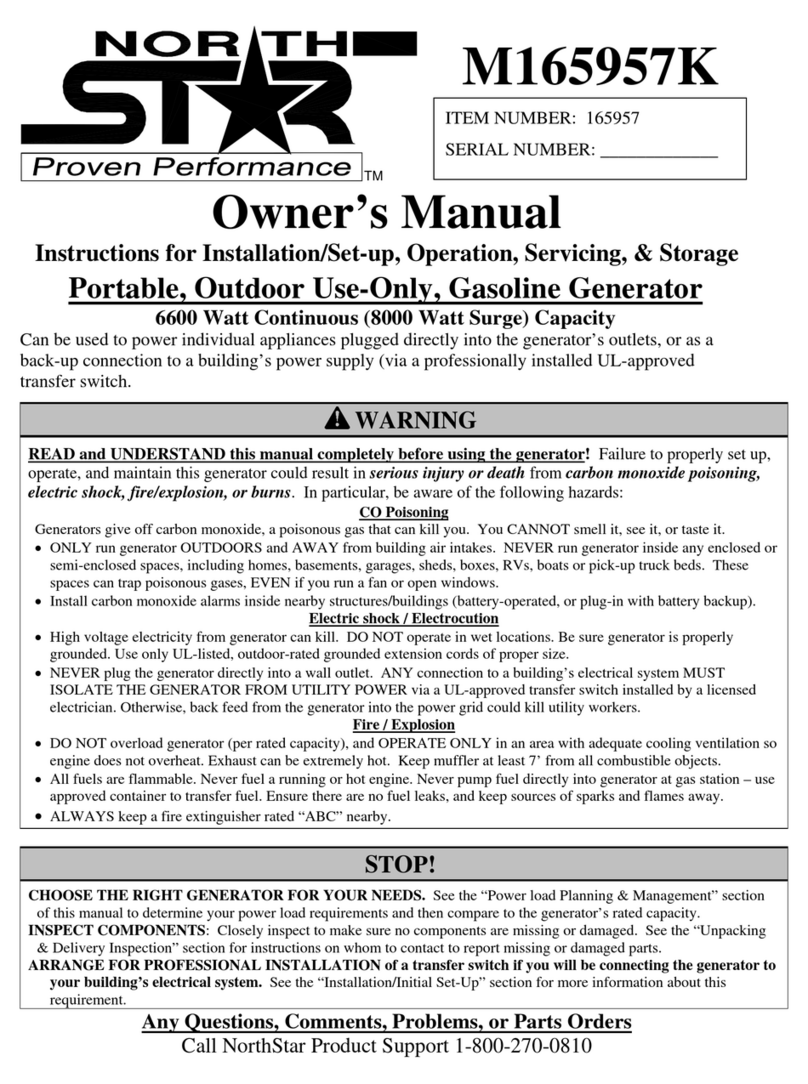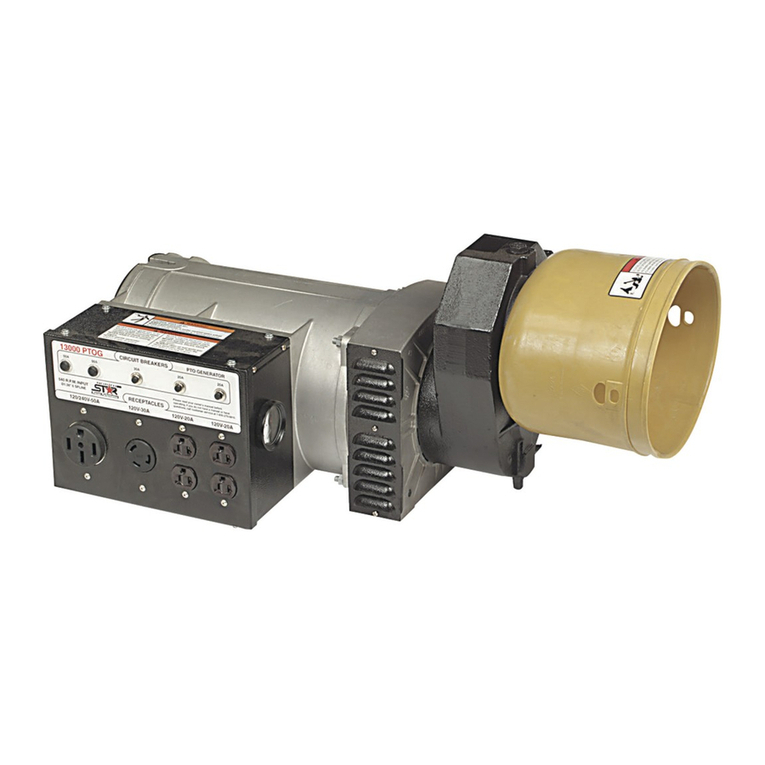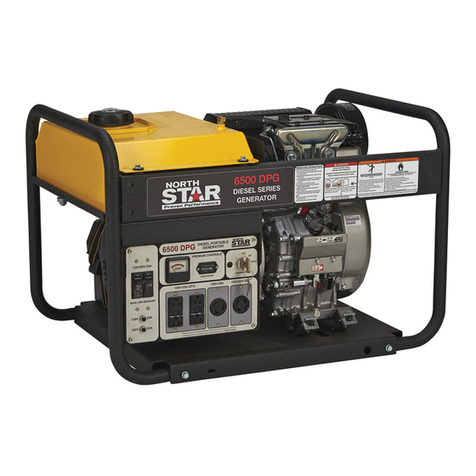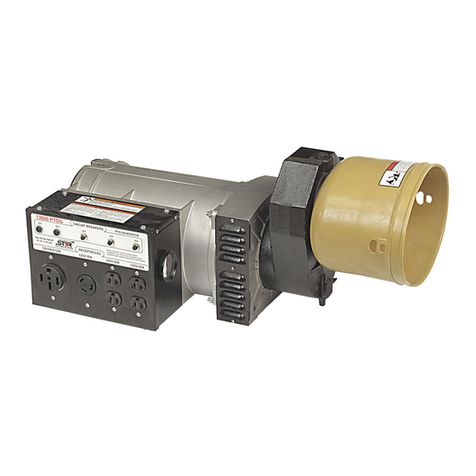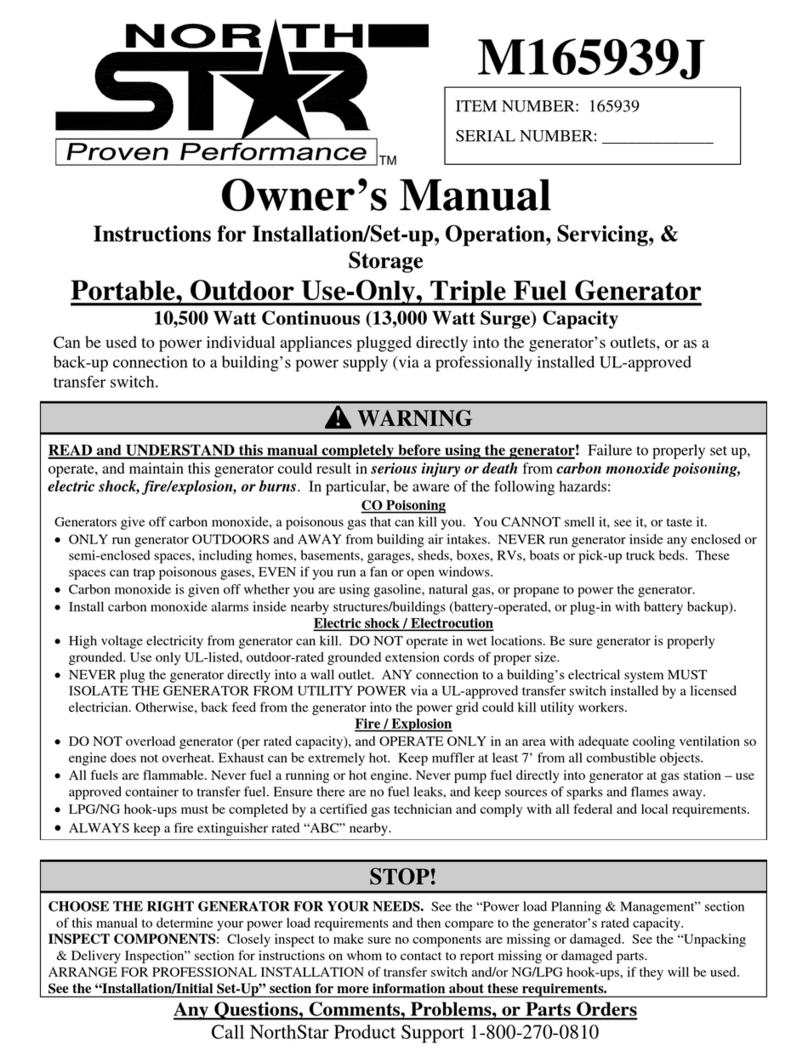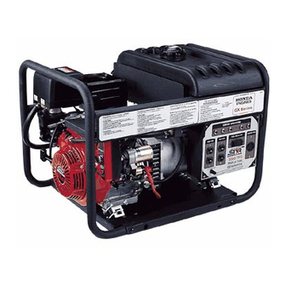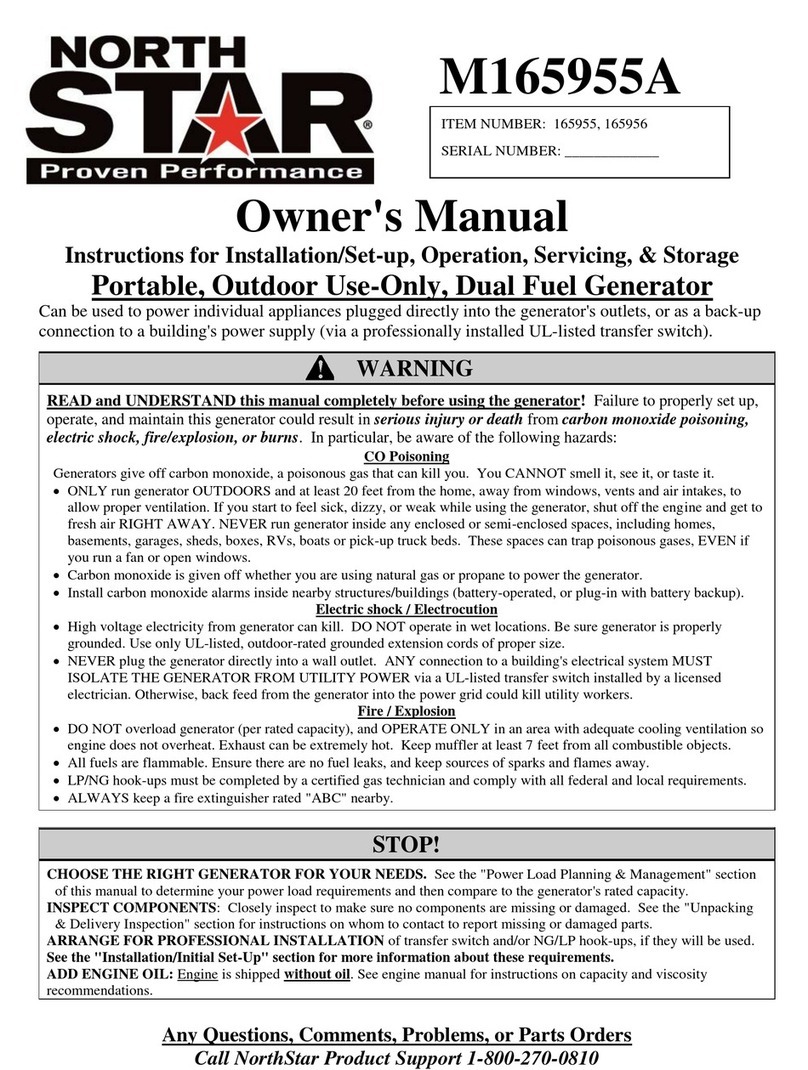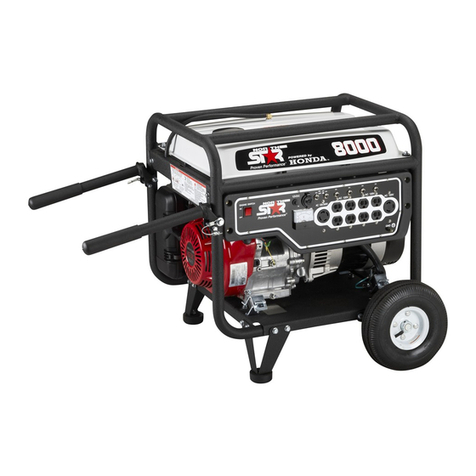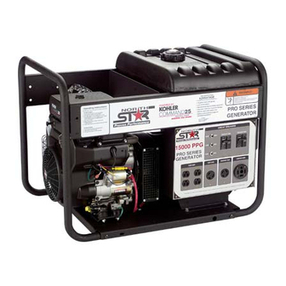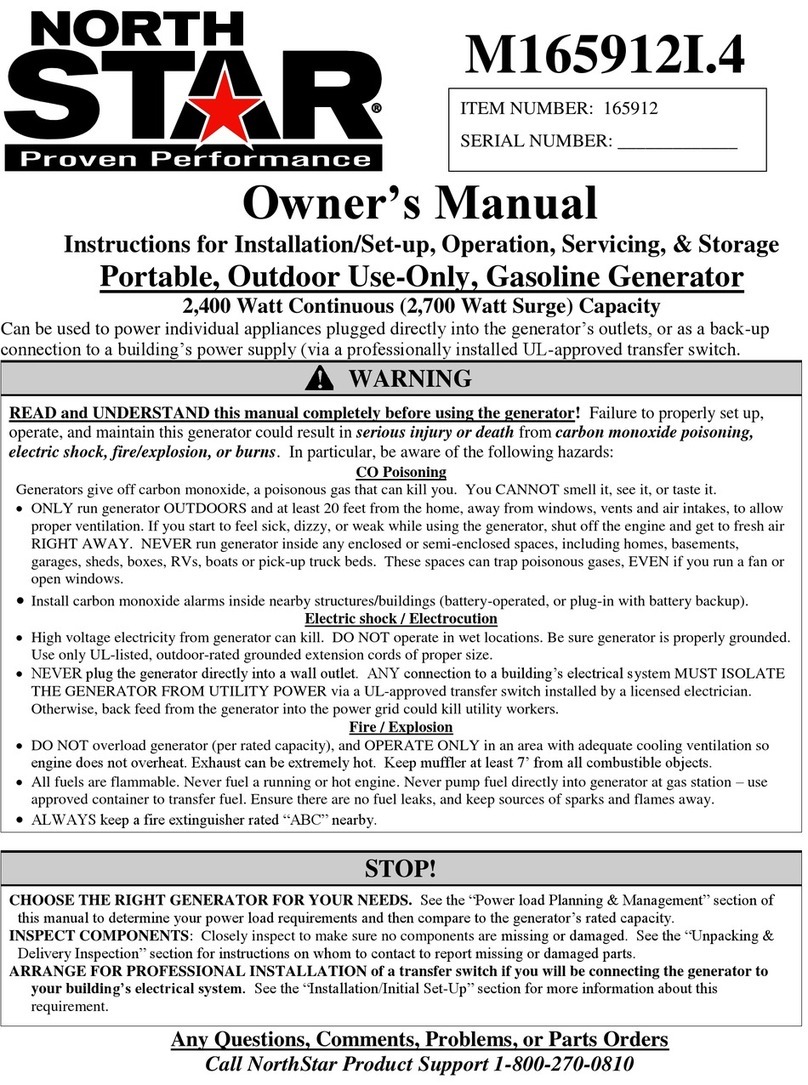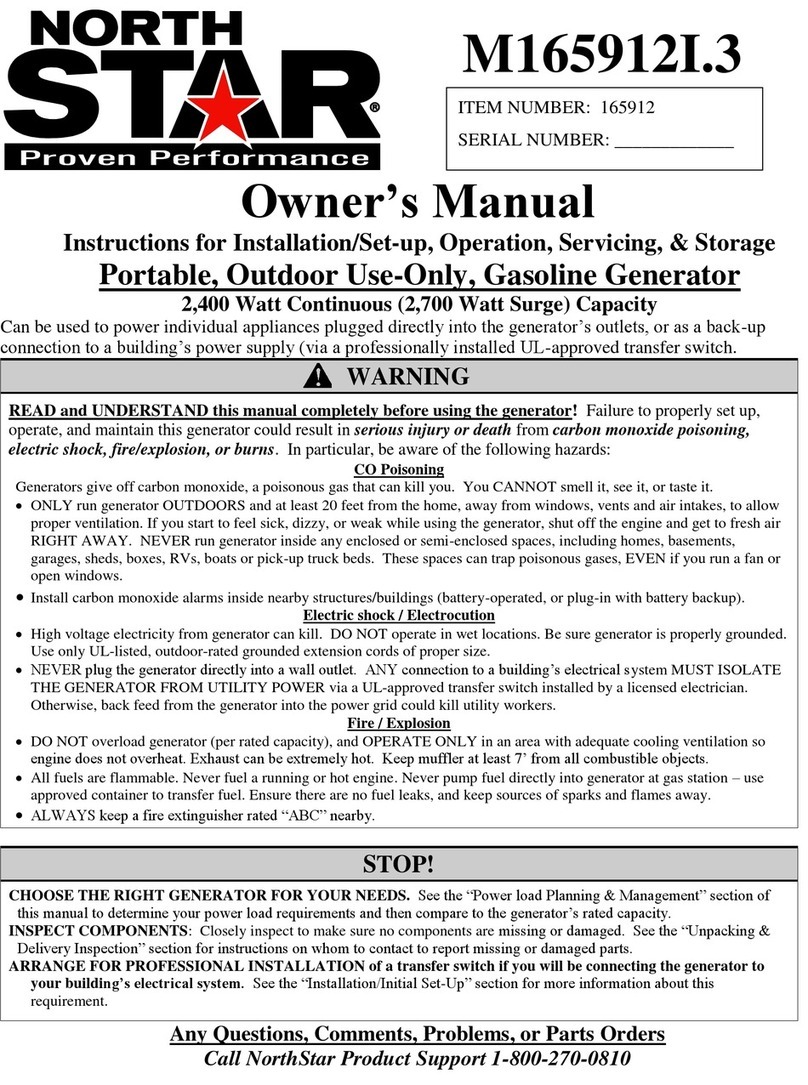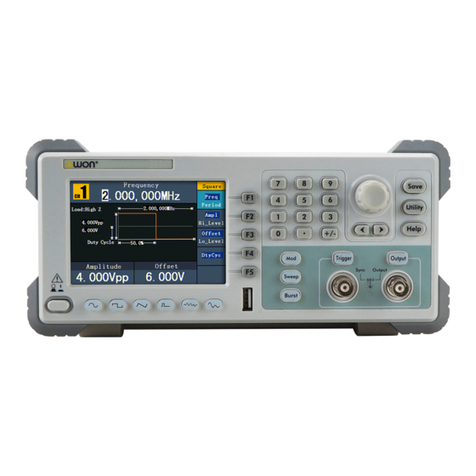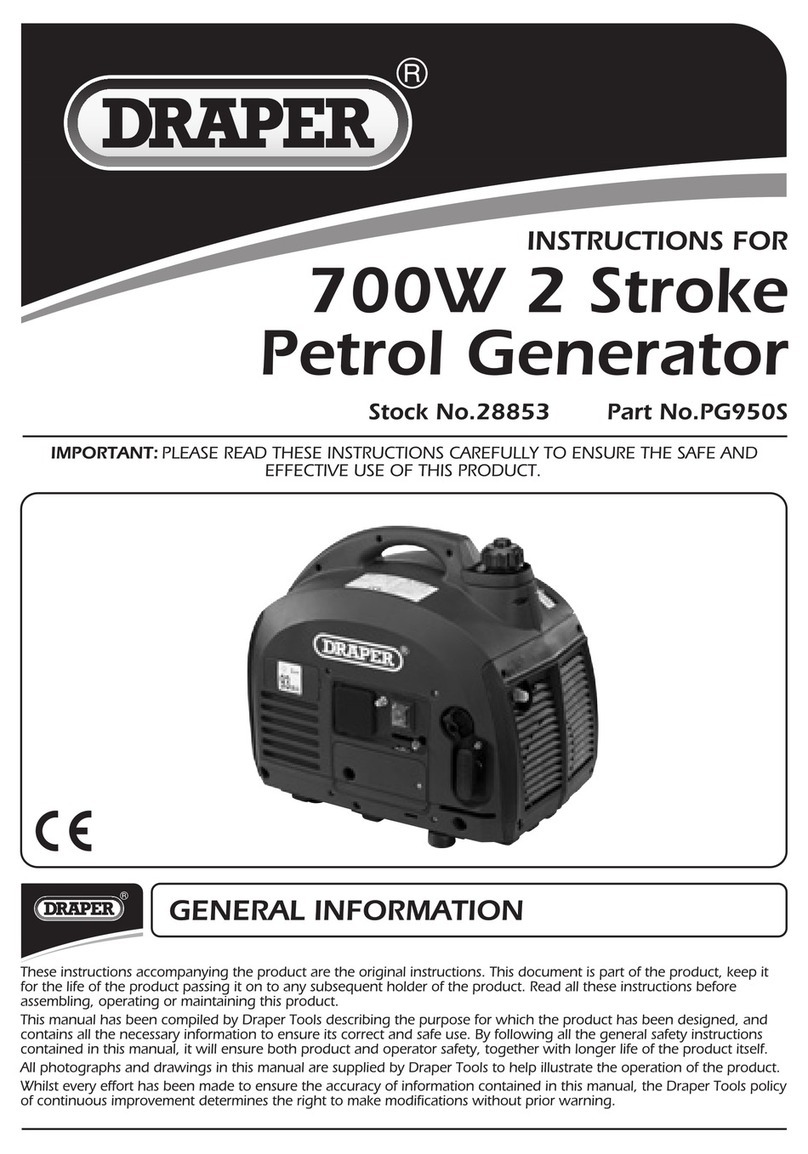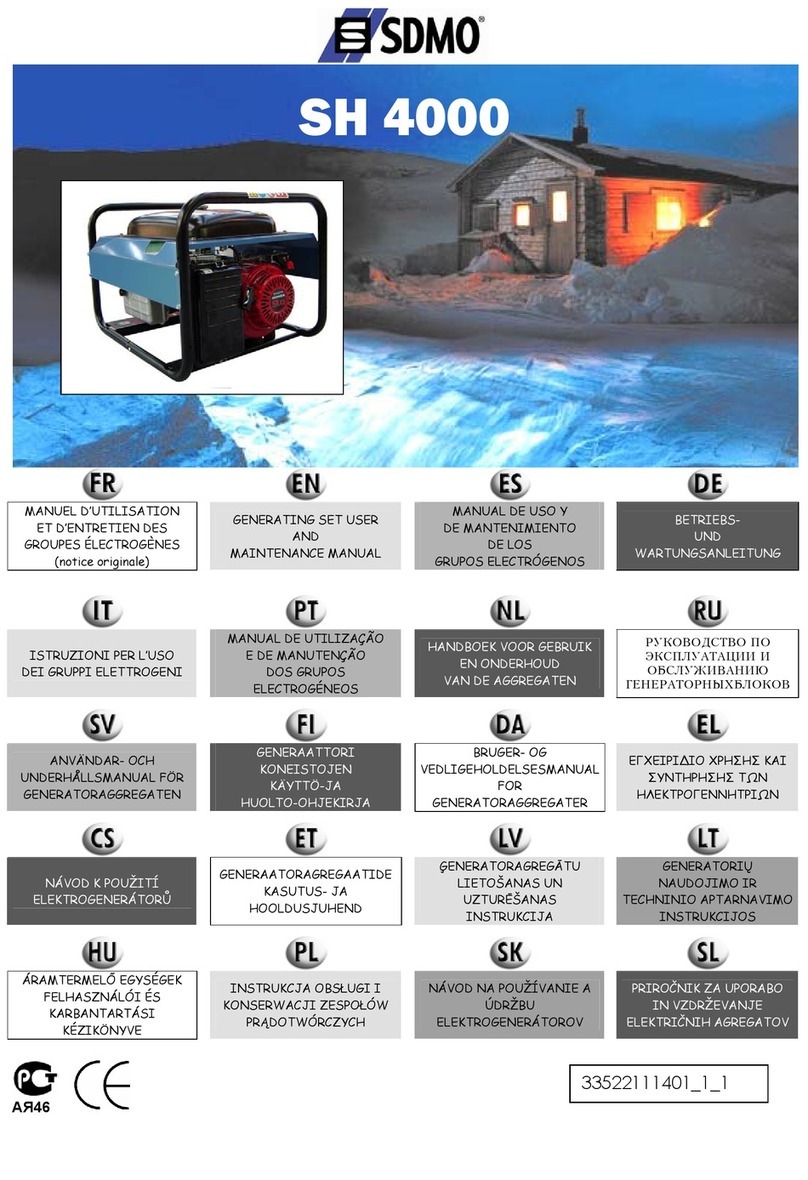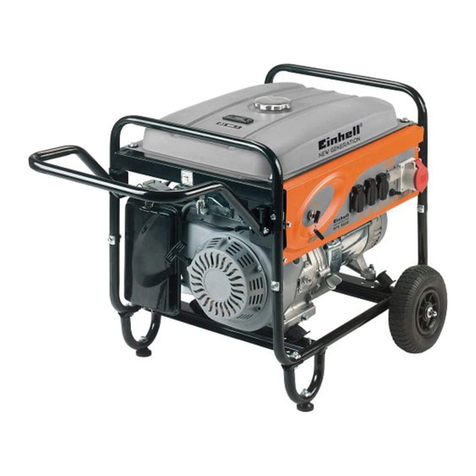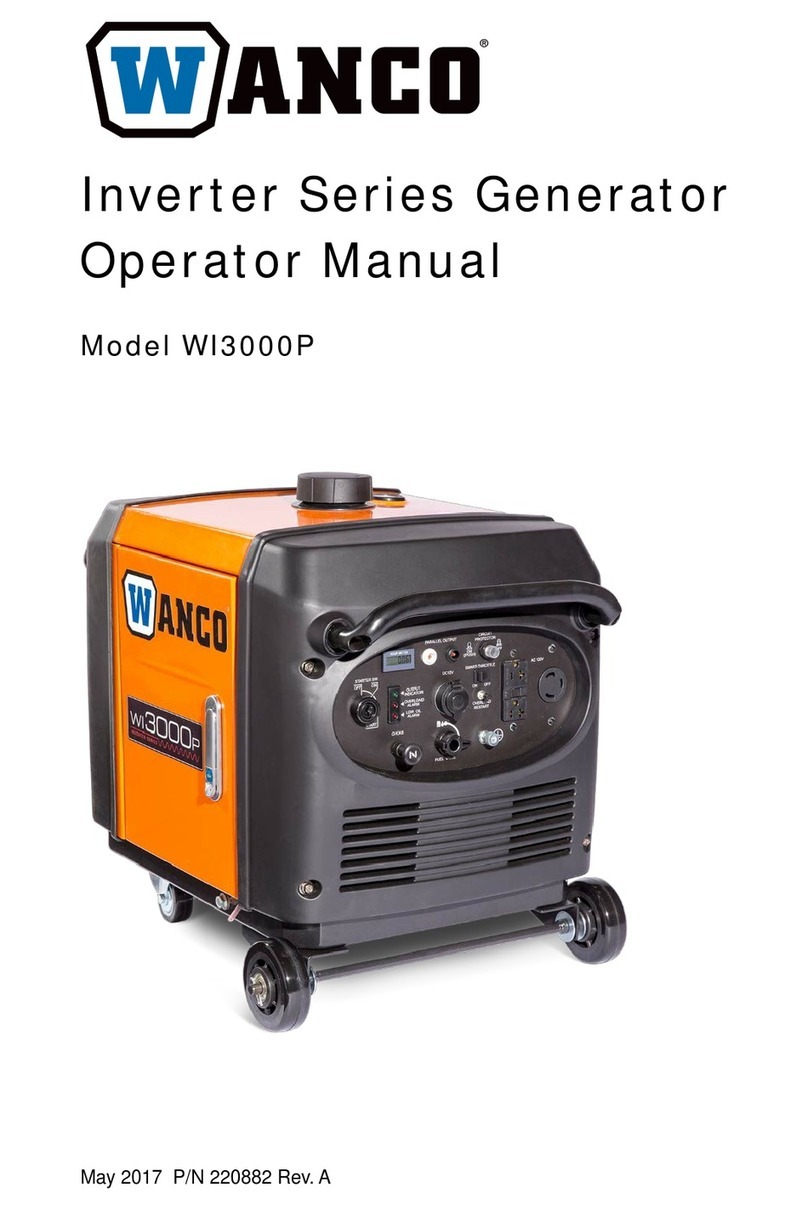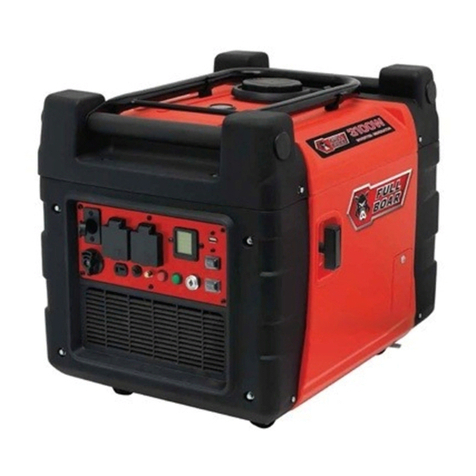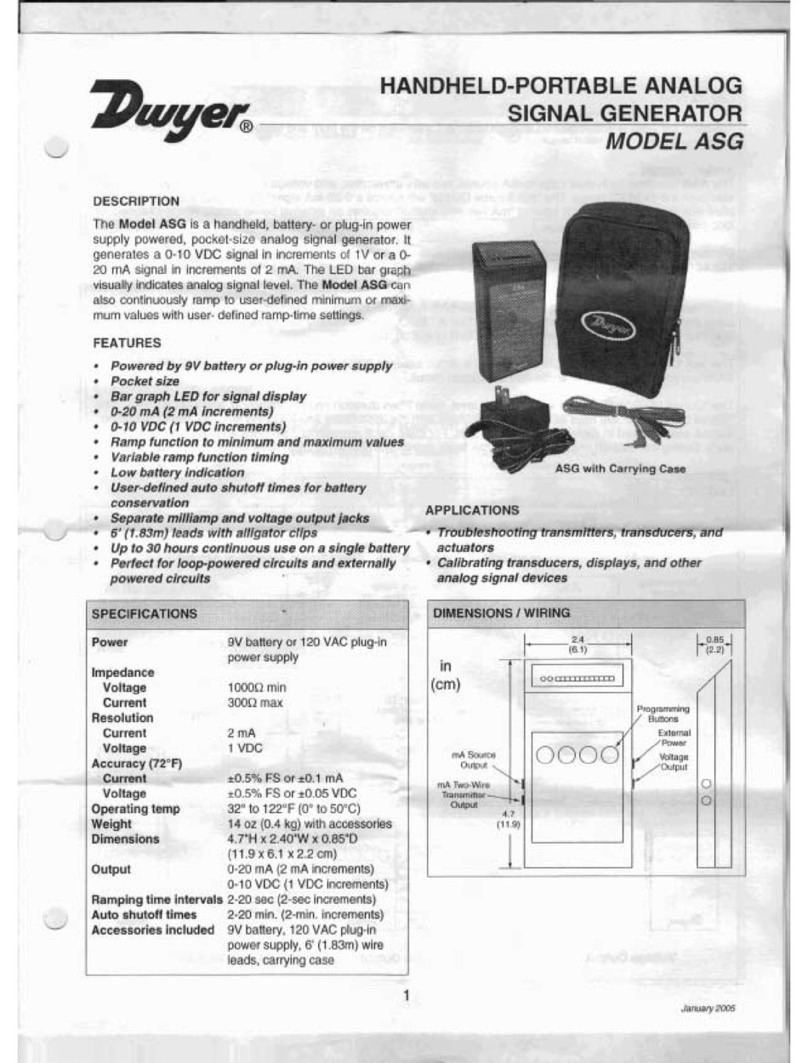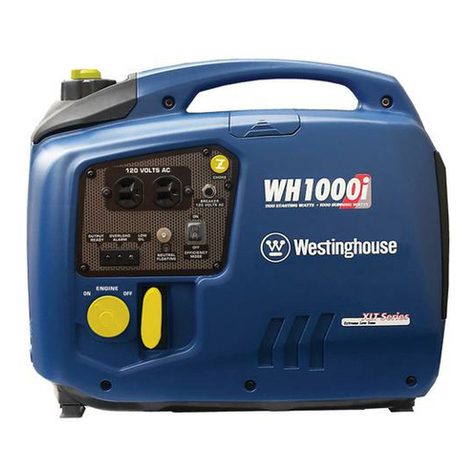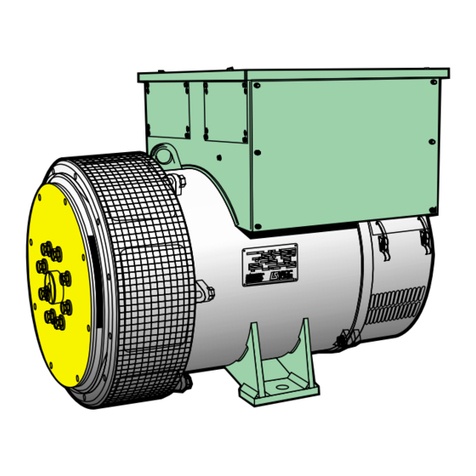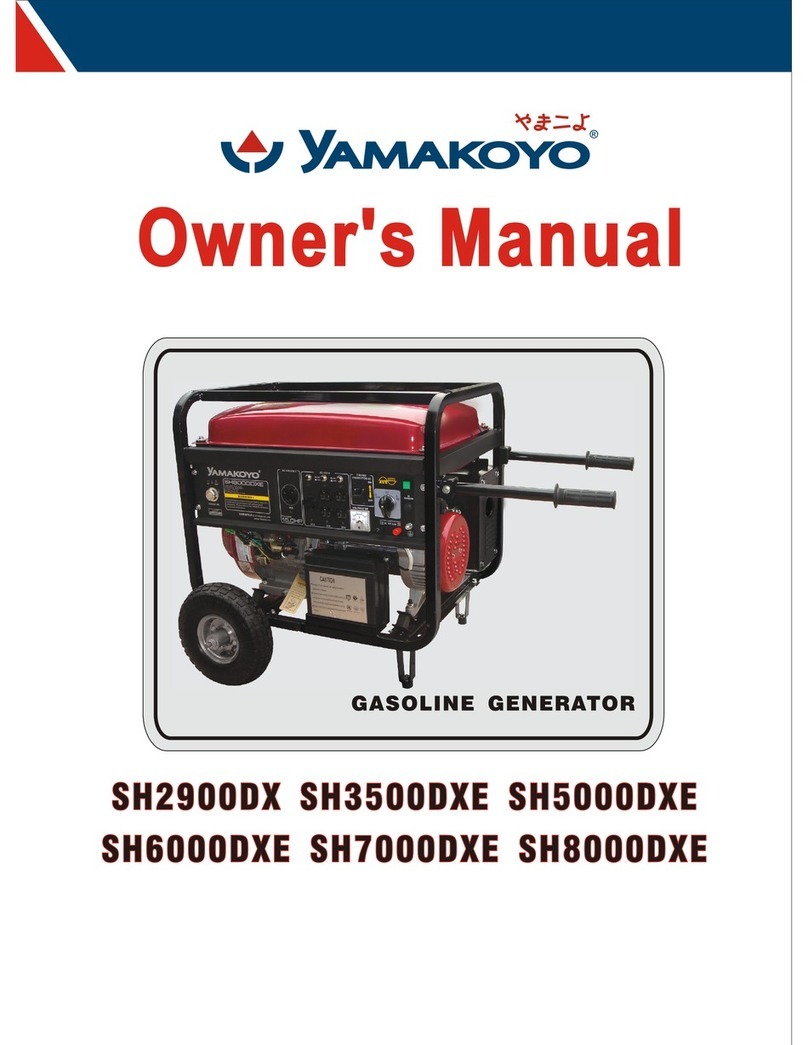
5
WARNING This generator is equipped
withagrounding post, located on the control panel for
your protection. Always complete the grounding path
from the generator to a copper pipe/rod that is driven
intomoist earth, to prevent electrical shock.
ALWAYS use electrical cords that are in good
condition. Worn, bare, frayed or otherwise damaged
cordscan cause electric shock.
NEVER operate the generator, or handle any
electrical equipment while standing in water, while
barefoot, while hands are wet or while in the rain or
snow. Electric shockmay result.
ALWAYS use a ground fault circuit interrupter
(GFCI) in damp or highly electrical conductive areas
andonconstructionjob-sitesto preventelectric shock.
ALWAYS remove the spark plug or spark plug
wire before working on the engine or generator, to
prevent accidental starting.
ALWAYS provide adequate ventilation. Do not
operate generator in any enclosed or narrow space.
Engines consume oxygen and give off deadly carbon
monoxide poisonous gas. Improper ventilation will
cause damage to generator and possible injury to
people.
NEVER touch hotmuffler, hot exhaust manifold or
engine cooling fins.
ALWAYS remove all oil or gasoline deposits and
accumulated dirt from generator and immediate area.
Keep generator head and engine clean.
NEVER operate the generator under the following
conditions:
A. Excessive change in engine speed, slow or
fast.
B. Overheatinginload connectingdevices.
C. Sparking orarcsfrom generator.
D. Lossof electrical output.
E. Damaged receptacles.
F. Engine misfire.
G. Excessive vibration.
H. Enclosed compartments, or confined areas.
I. Flame or smoke.
J. Rain, snow or wet conditions.
K. Operator non-attendance.
WARNING Check fuel system on a
regular basis. Look for signs of leaks, deterioration,
chafed or spongyfuel hose,loose ormissing fuel hose
clamps, damagedfuel tank or a defective fuel shut-off
valve. Correctanydefectsbefore operation.
WARNING Keep fire extinguisher close
by your generator and be familiar on how to use it.
Consult your local fire department for correct
extinguisher type.
INSTALLATION
OUTDOORS: Choose a location where the
generator will not be exposed to rain, snow or direct
sunlight. Position the generator on secure, level
ground soit will nottip or slide down a hill. Place the
generator so that the exhaust fumes will not be
directedtowardspeople.
The installation site must be free from water,
moisture,or dust. All electrical components should be
protected from excessive moisture or the insulation
system will deteriorate and result in grounding or
shortingout the generating system.
Foreign matters, such as dust, dirt, sand, lint, or
abrasivematerialscan cause damage to the generator
head andengine if allowedintoitscooling system.
NEVER install your generator inside confined
areas. Inside installation can cause health hazards or
death.
DANGER Remember,exhaust fumesare
deadly carbon monoxide gas, and must be vented to
theoutside wherethere are no people. Cooling air of
sufficient amounts must be allowed to flow in and
exhausted out to ensure proper cooling of the engine
and generator head.
LOAD APPLICATION
Itisimportanttodetermine thetotal electrical load
beforeitisconnected to thegenerator. Thetwomajor
factorsin determining thelife of a generator head are:
heat build up, caused by overloading the generator,
andcorrosive contaminants, that can attack the wiring
insulation. If the generator is overloaded, the wires
become excessively hot and cause the insulation to
break down, reducing its ability to resist corrosive
contaminants. Over time the effectiveness of the
insulationiseliminatedanda dead short can result.
Always compare the generator nameplate data
with that of the equipment to be used to ensure that
watts, volts, amperage, and frequency requirements
are suitable for operating equipment. The wattage
listed on the equipment nameplate is its rated output.
However, some equipment may require three to ten
times more wattage than its rating on the nameplate,
as the wattage is influenced by the equipment
efficiency, power factor and starting system. NOTE: If
wattage is not given on equipment nameplate,
approximate wattage may be determined by

